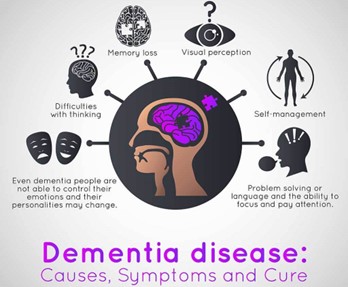The Practical Nurse (PN) is caring for a client with dementia and memory loss. Which of the following communication techniques would be most effective? (Select all that apply)
Avoid long explanations
Ask one question at a time
Use short sentences
Talk loudly
Correct Answer : A
Choice A reason: This is correct because it shows that the PN is respectful and sensitive to the client’s cognitive impairment. Long explanations can confuse and overwhelm the client, who may have difficulty processing and retaining information.
Choice B reason: This is correct because it shows that the PN is respectful and sensitive to the client’s cognitive impairment. Asking one question at a time can help the client focus and respond more easily, without feeling pressured or frustrated.
Choice C reason: This is correct because it shows that the PN is respectful and sensitive to the client’s cognitive impairment. Using short sentences can help the client understand and remember the message, without being distracted or confused by unnecessary words.
Choice D reason: This is incorrect because it shows that the PN is rude and disrespectful to the client’s hearing ability. Talking loudly can make the client feel annoyed or threatened, and may not improve communication if the client has hearing loss. The PN should talk in a normal tone and check for understanding.

Nursing Test Bank
Naxlex Comprehensive Predictor Exams
Related Questions
Correct Answer is ["B"]
Explanation
Choice A reason: Maslow’s hierarchy of needs is a framework for prioritizing human needs, but it is not an organized approach for performing a physical examination. A physical examination should be systematic and comprehensive, not based on subjective preferences or assumptions. Therefore, this choice is incorrect.
Choice B reason: A head-to-toe assessment is an organized approach for performing a physical examination that covers all the major body systems and regions. It allows the nurse to identify any abnormalities or changes in the client’s health status and to document the findings in a consistent manner. Therefore, this choice is correct.
Choice C reason: Subjective data collection is the process of obtaining information from the client about their symptoms, feelings, beliefs, and preferences. It is an important part of the nursing assessment, but it is not an organized approach for performing a physical examination. A physical examination requires objective data collection, which involves observing, measuring, and testing the client’s physical signs. Therefore, this choice is incorrect.
Choice D reason: Review of systems is an organized approach for performing a physical examination that focuses on each body system separately and asks specific questions related to its function and problems. It helps the nurse to elicit relevant information from the client and to detect any abnormalities or deviations from normal. Therefore, this choice is correct.
Correct Answer is B
Explanation
Choice A reason: "Alcoholism is a disease that affects the whole family.” is not the best response to the client’s husband. This response shows generalization, which is a communication technique that involves using statements that apply to most people in similar situations. It also shows lecturing, which is a communication barrier that involves giving unsolicited advice or information to the other person. It may make the client’s husband feel stereotyped, judged, or patronized, and may discourage further communication. Therefore, this choice is incorrect.
Choice B reason: "You sound frustrated in dealing with your wife’s drinking problem.” is the best response to the client’s husband. This response shows active listening, which is a communication skill that involves hearing, understanding, and responding to the client’s verbal and nonverbal messages. It also shows empathy, which is the ability to understand and share the feelings of another person. It acknowledges and validates the client’s husband’s emotions, and invites him to express his concerns or fears. Therefore, this choice is correct.
Choice C reason: "I think you are a good person to stay here with your wife.” is not the best response to the client’s husband. This response shows praise, which is a communication technique that involves giving positive feedback or recognition to the other person. It also shows assumption, which is a communication barrier that involves making judgments or guesses about what the other person thinks or feels. It may make the client’s husband feel uncomfortable, embarrassed, or pressured, and may not address his underlying feelings or needs. Therefore, this choice is incorrect.
Choice D reason: “Have you discussed this subject at the support group meetings?” is not the best response to the client’s husband. This response shows closed-ended questioning, which is a communication technique that involves asking questions that require a yes or no answer or a specific piece of information. It also shows probing, which is a communication barrier that involves asking too many or inappropriate questions to the other person. It may make the client’s husband feel defensive, invaded, or resentful, and may violate his privacy or confidentiality. Therefore, this choice is incorrect.
Whether you are a student looking to ace your exams or a practicing nurse seeking to enhance your expertise , our nursing education contents will empower you with the confidence and competence to make a difference in the lives of patients and become a respected leader in the healthcare field.
Visit Naxlex, invest in your future and unlock endless possibilities with our unparalleled nursing education contents today
Report Wrong Answer on the Current Question
Do you disagree with the answer? If yes, what is your expected answer? Explain.
Kindly be descriptive with the issue you are facing.
